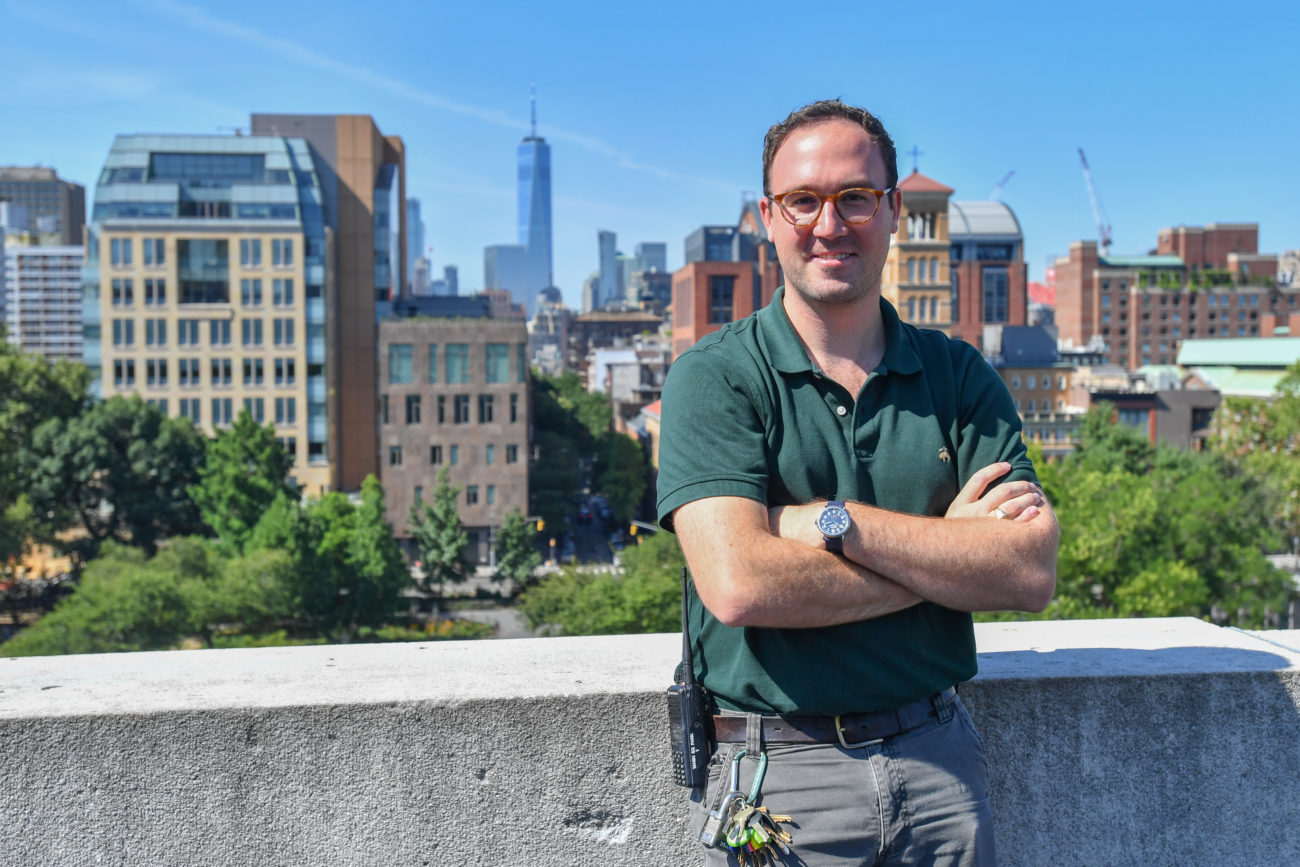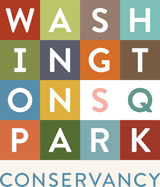October Update from the Washington Square Park Administrator

It’s fall! This is a season of transition in the Park. The leaves start turning, the staffing hours shift to fit better with the flow of the day, and we turn from high-speed summer maintenance into a more even pace as we transition to fall and winter mode. While that includes some plantings (fall is a great time to get bulbs in the ground) one of the major tasks each fall is choosing two lawns in the Park to rotate out for rest. We select one lawn on each side of the park, east and west, so we don’t inhibit public use of the space in a substantial way, while still having a chance to give lawns a much needed rest.
This season, the lawns closed for rest are the lawn on your left as you walk the diagonal path from the NE corner towards Garibaldi Plaza, and the lawn between Chess Plaza and the Washington Place entrance. These lawns haven’t been closed for rest in four years and are starting to look scraggly, and the western lawn in particular is suffering erosion loss.
The process actually begins the year before, when we set up a mulch-bin on one of the lawns next slated for closure. Washington Square Park uses self-produced mulch from leaves and other organic debris, which is all gathered together in a single spot and chopped up using the Park’s muchler. We put the bin on a lawn slated for closure because the mulch pile itself essentially suffocates the grass underneath. When the lawn is then closed for rest, the mulch-bin is moved elsewhere in the Park and the patch of ground it was on has a chance to recover.
Next is setting up fencing and signage to inform the public of the closures, which last from September to May. Once the fences are set up, the lawns are aerated with our onsite aerator machine, which looks something like a large spiked roller. The aerator punches holes in the soil to combat the compaction issues. When the aeration is completed, both lawns are seeded with the Park’s custom blend of grass, generously purchased by the Washington Square Park Conservancy. Carefully combined to fit WSP’s mix of sun and shade, the seed mix includes Kentucky Bluegrass, Fescue, and Rye. We spread significantly more grass than is necessary for a lush lawn because the Park’s wildlife friends—namely squirrels and birds—love to snack on the seeds. Spreading seed in the fall allows it to germinate and spread while the ground is still warm; before it goes dormant in winter and comes back stronger than ever in spring. When spring comes gardeners will aerate and seed again, so that by the time the lawn is reopened it will be lush and green once more. It’s a process we know works, we’ve seen it in action time and time again, most recently with the large lawn in front of the Park House colloquially referred to as “the beach” and the lawn between the Laguardia and Washington Square East entrances.
While these lawns are closed, we will also be taking the opportunity to expand a new tool that was piloted on the beach lawn this season: grass mats. These mats not only help protect the underlying grass in high-traffic areas, they have been unexpectedly useful in fighting soil erosion. In areas that have suffered the most loss we’ll be replacing soil and covering the spots with mats to create zones that are better protected from erosion.
Fall is a particularly beautiful time of year in the Park, and even with the lawn closures there is plenty of green space for all to enjoy. I hope everyone gets out and makes the most of it before we transition into winter.
